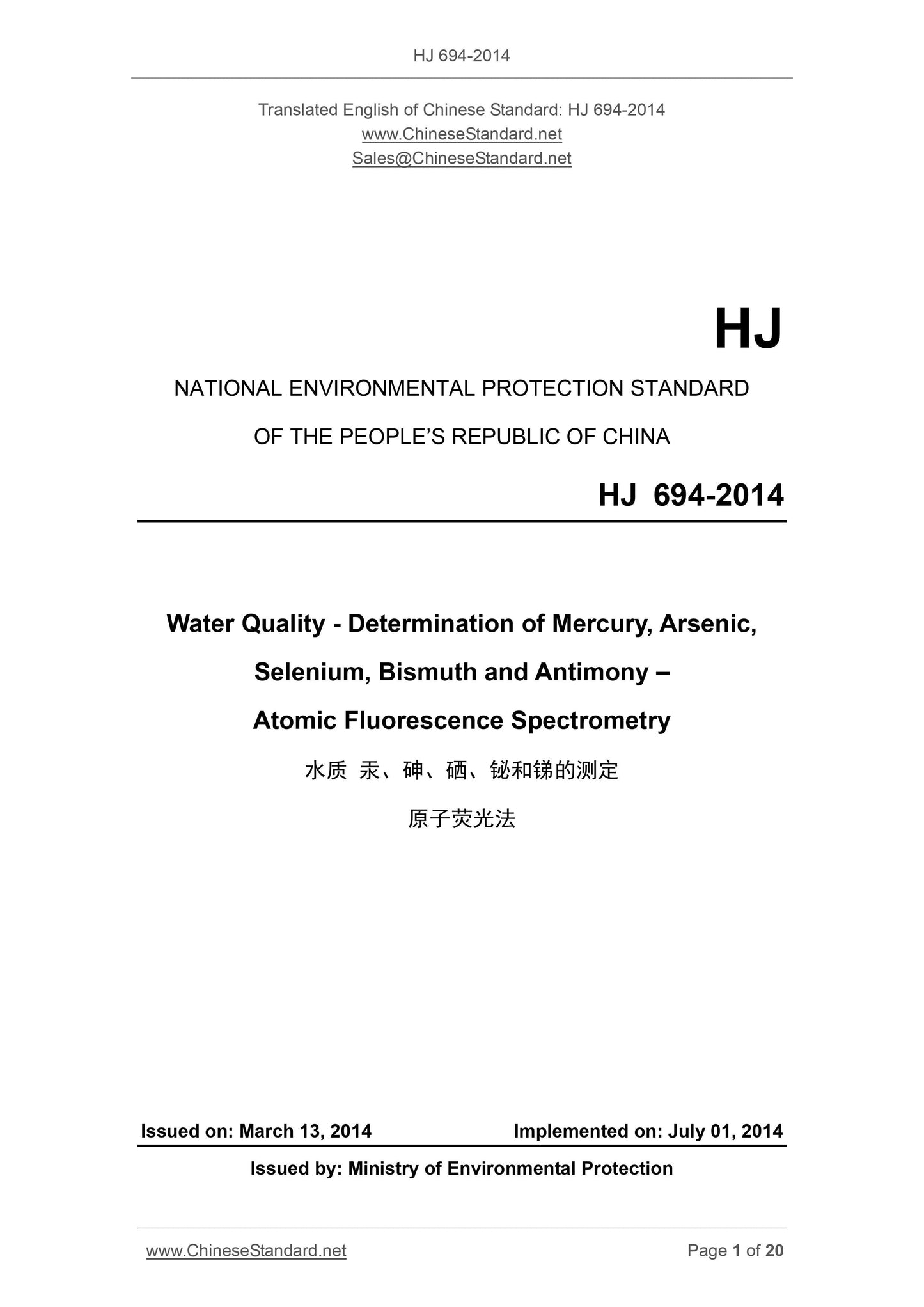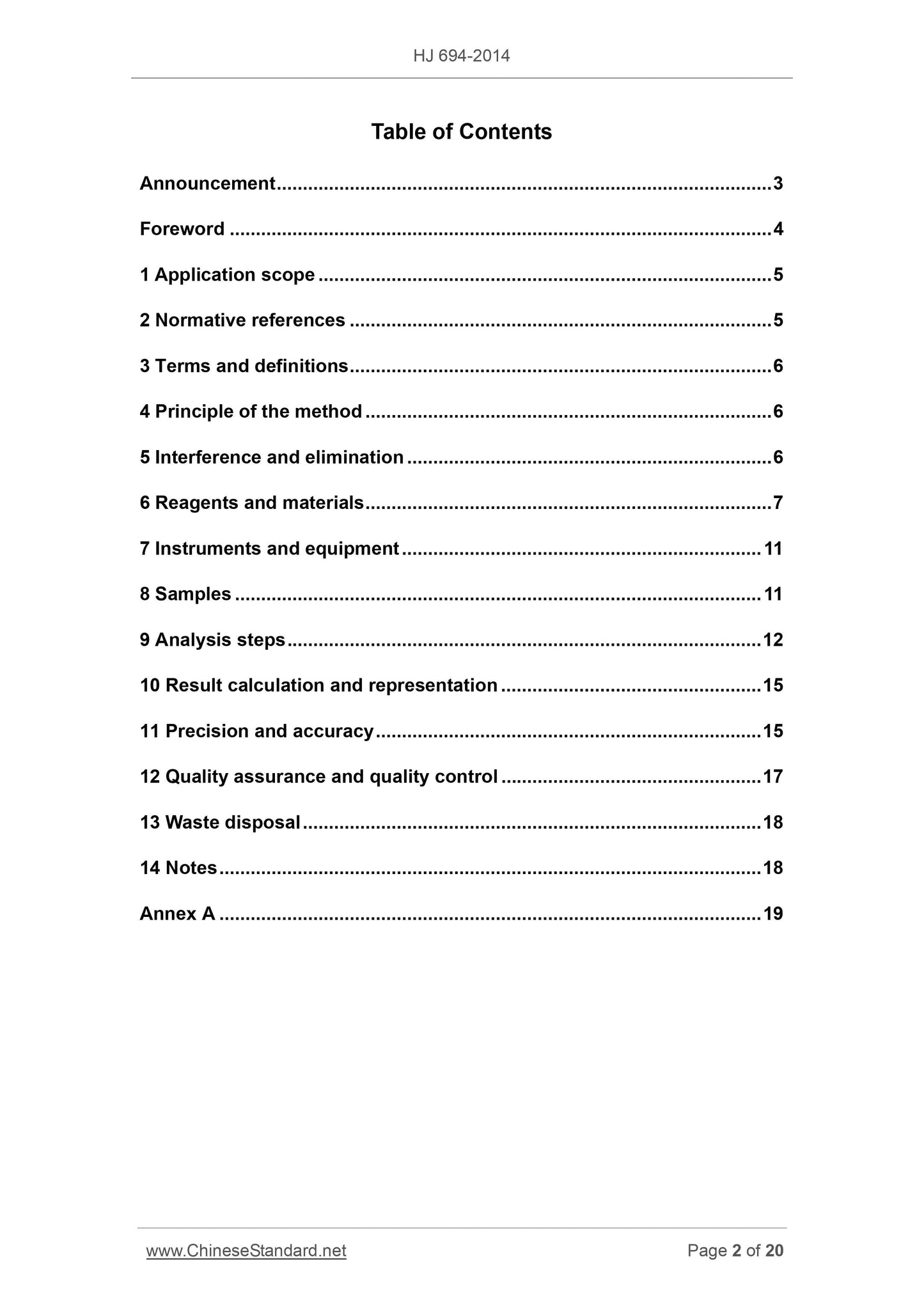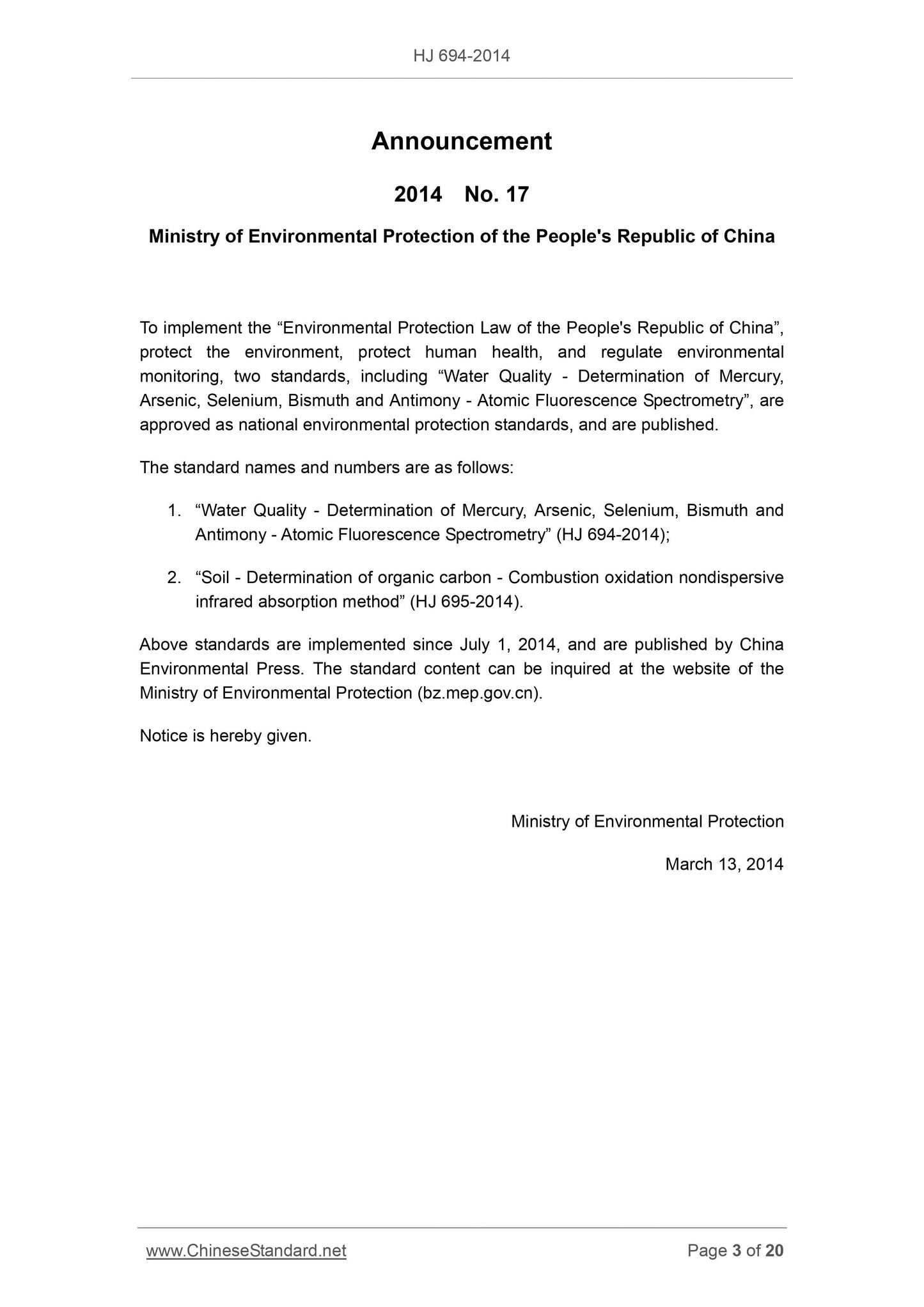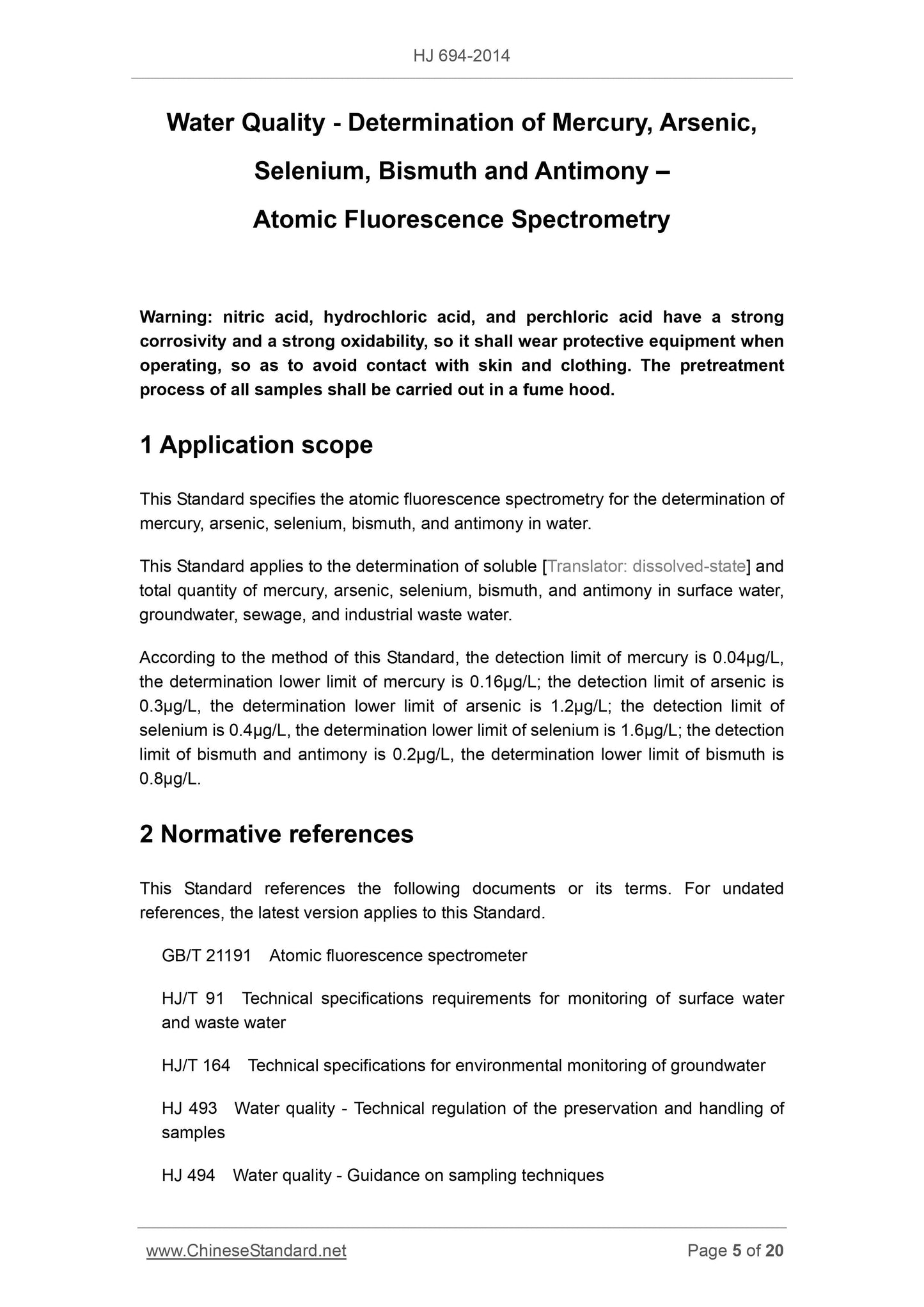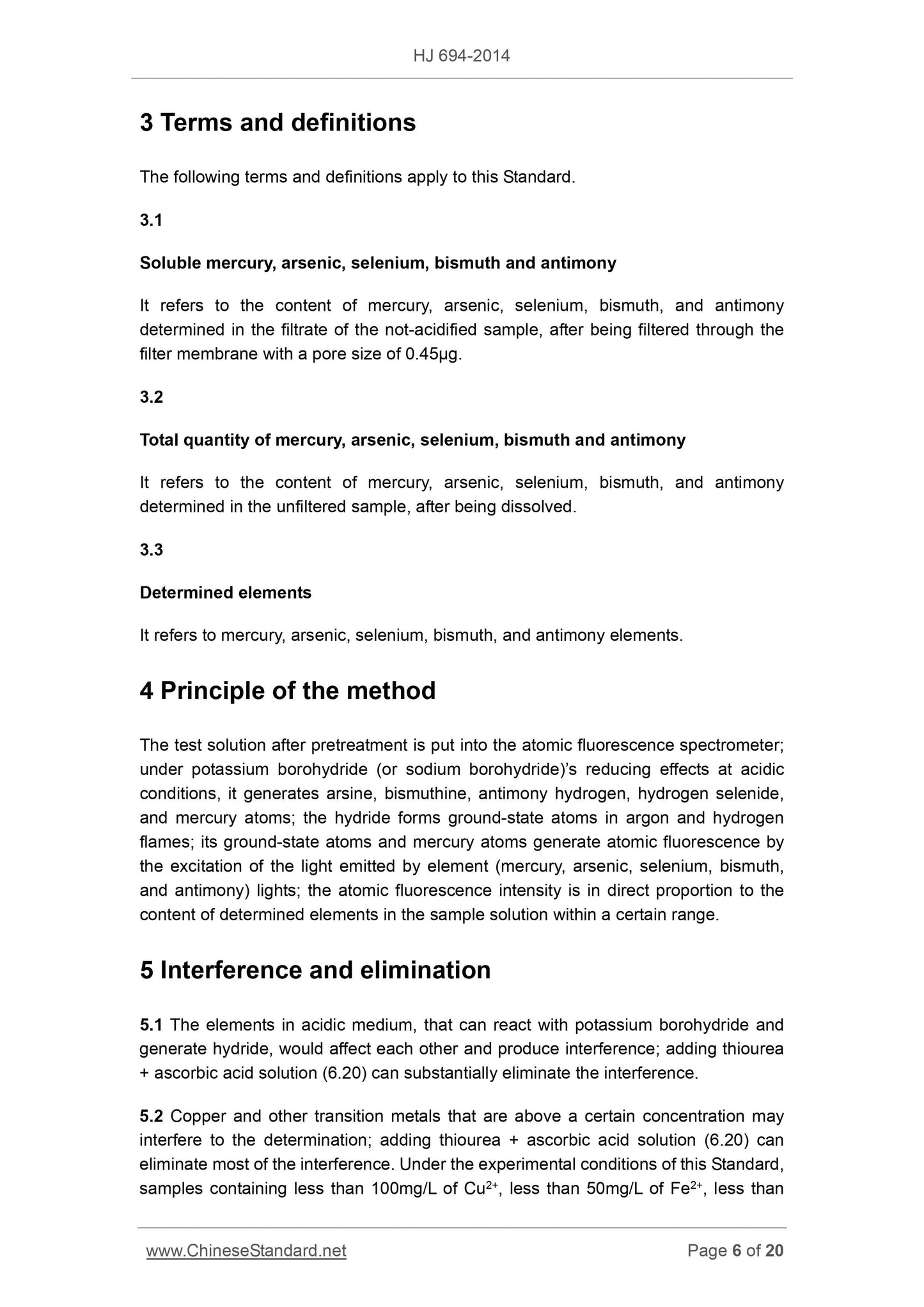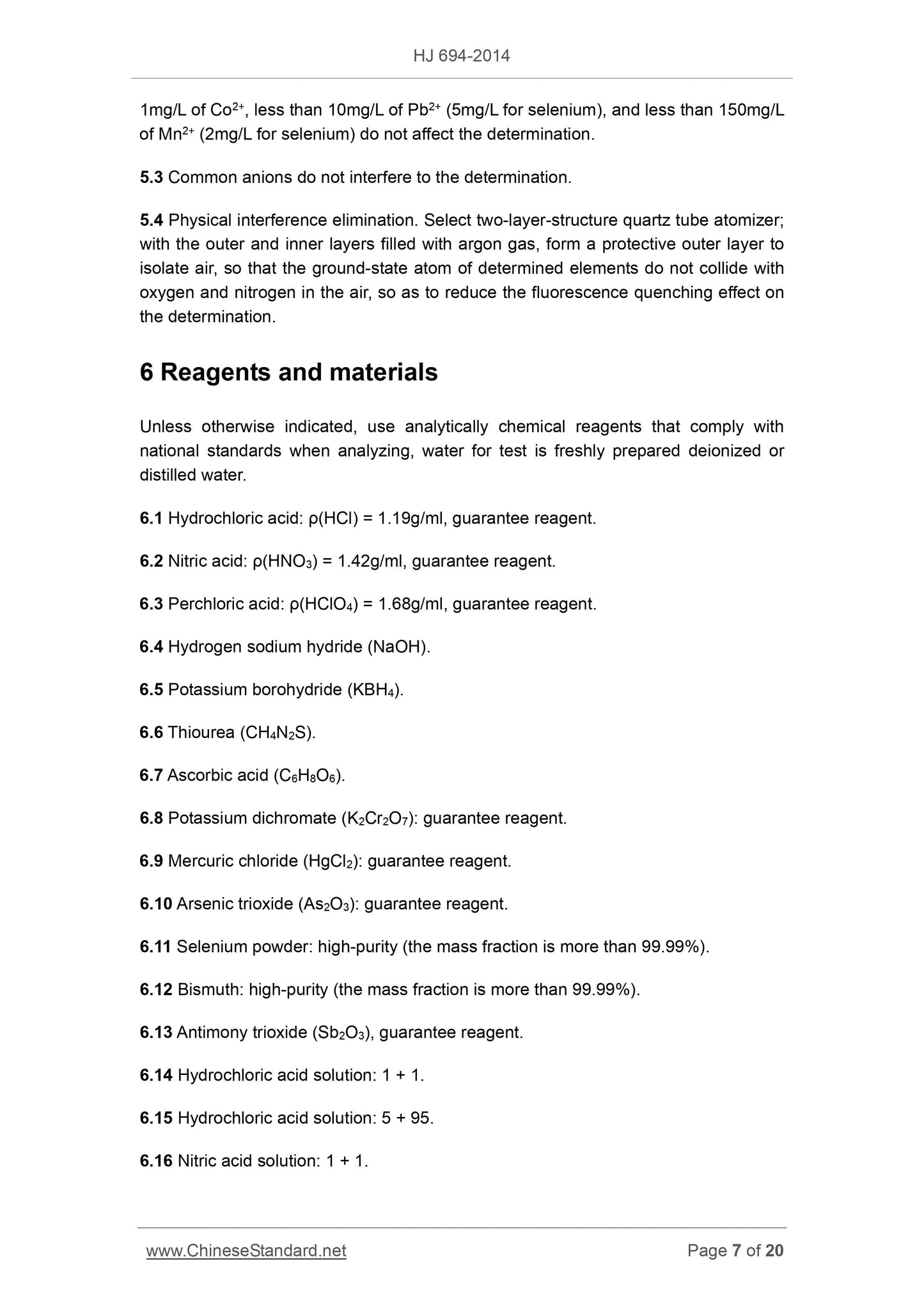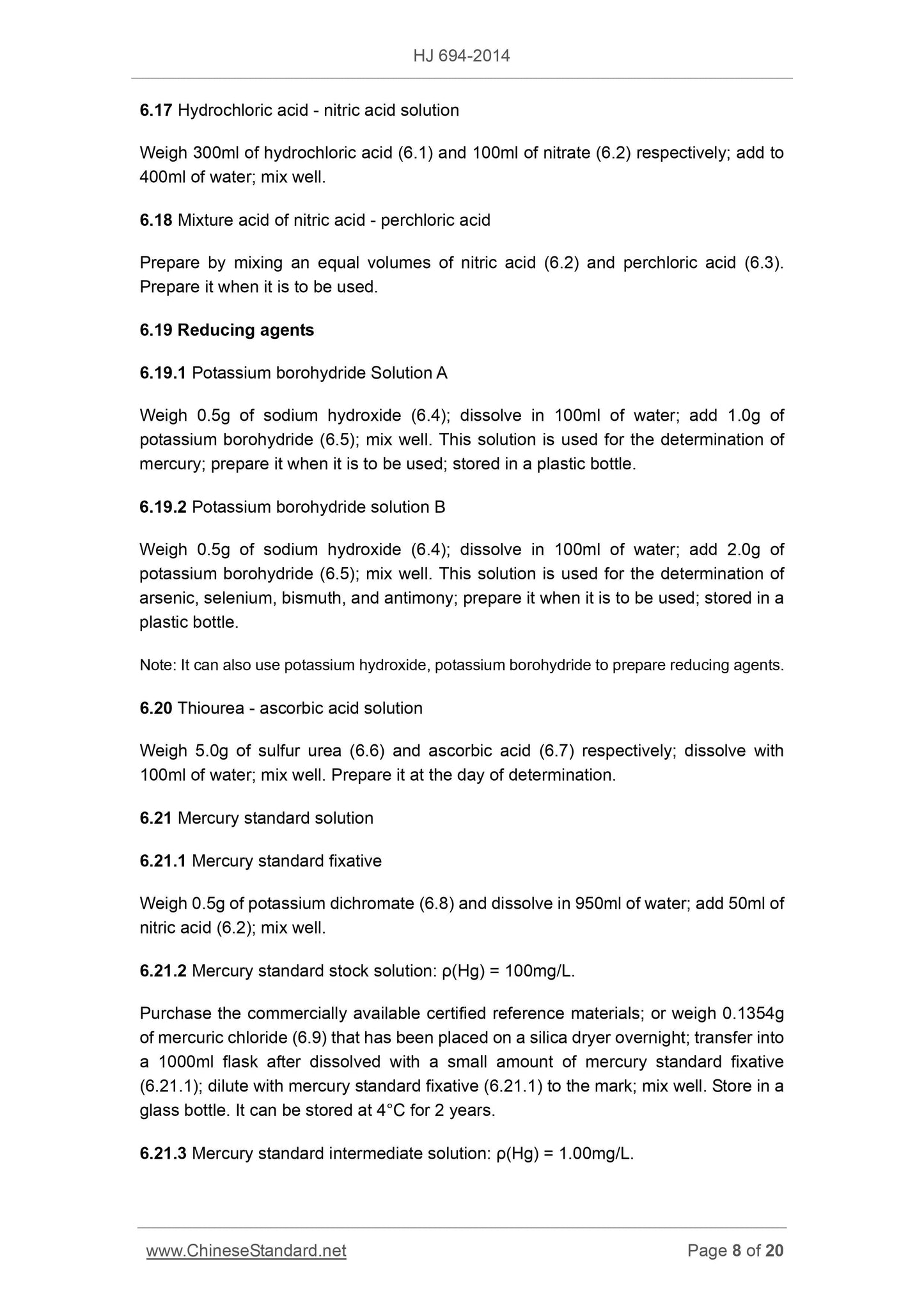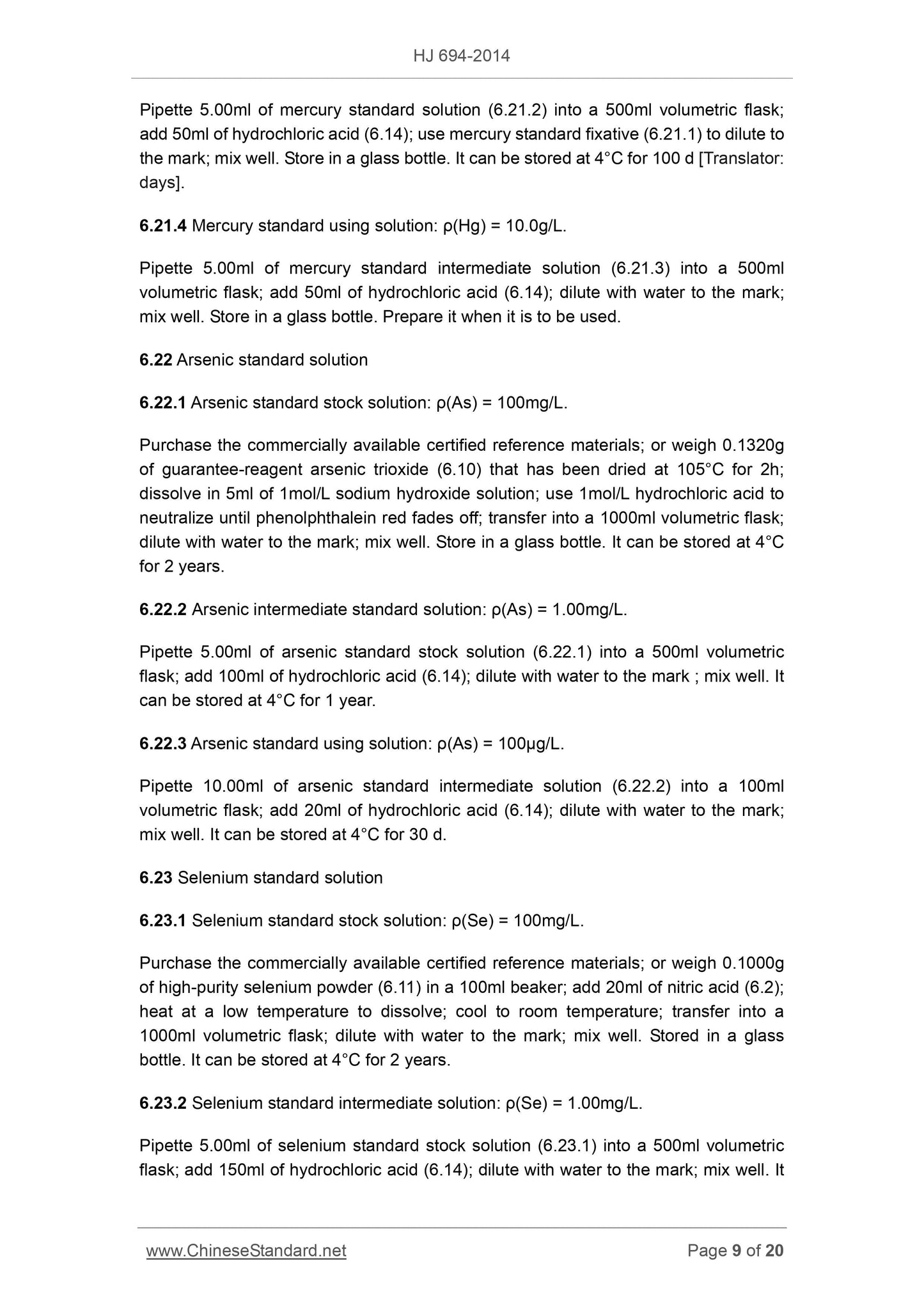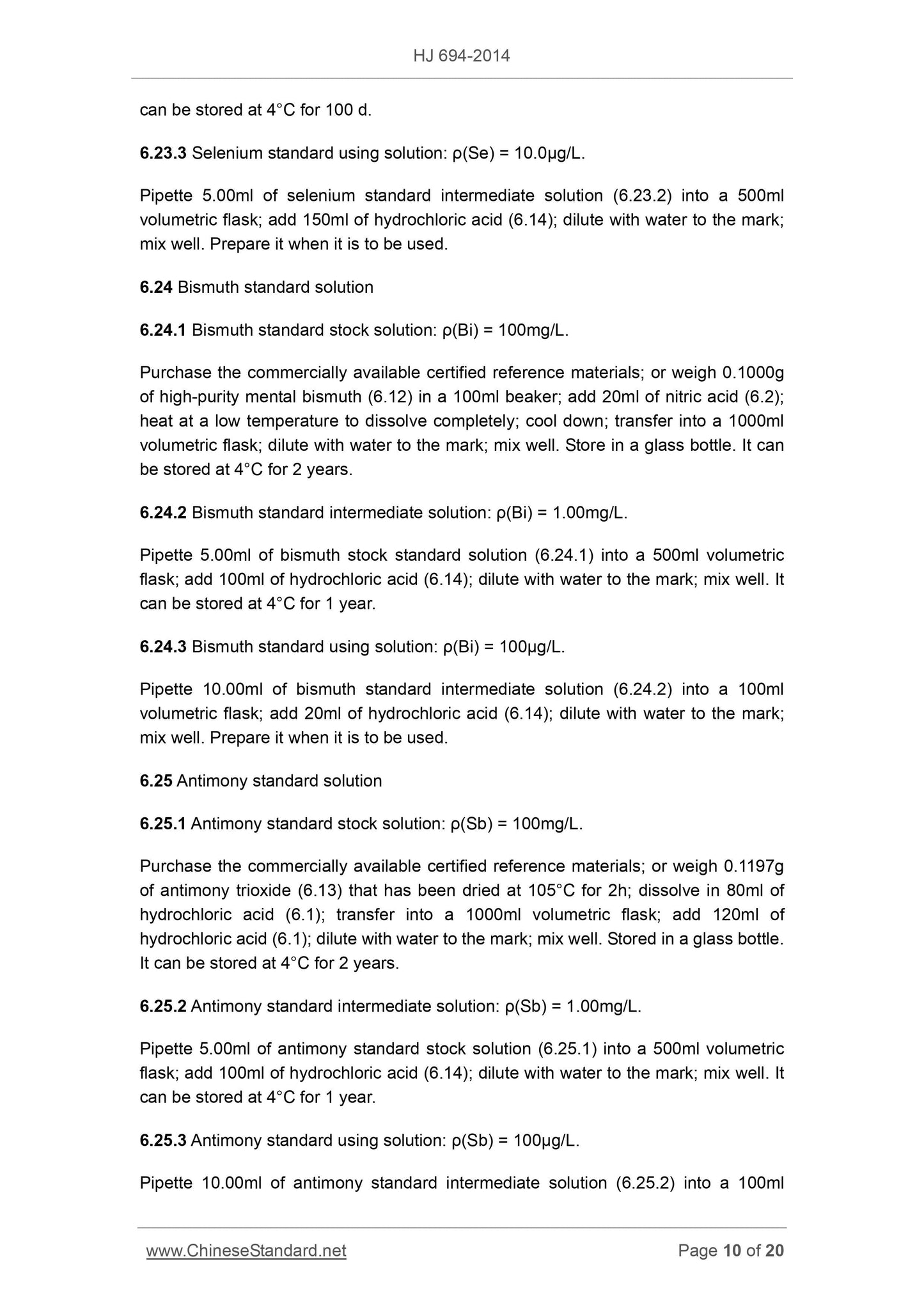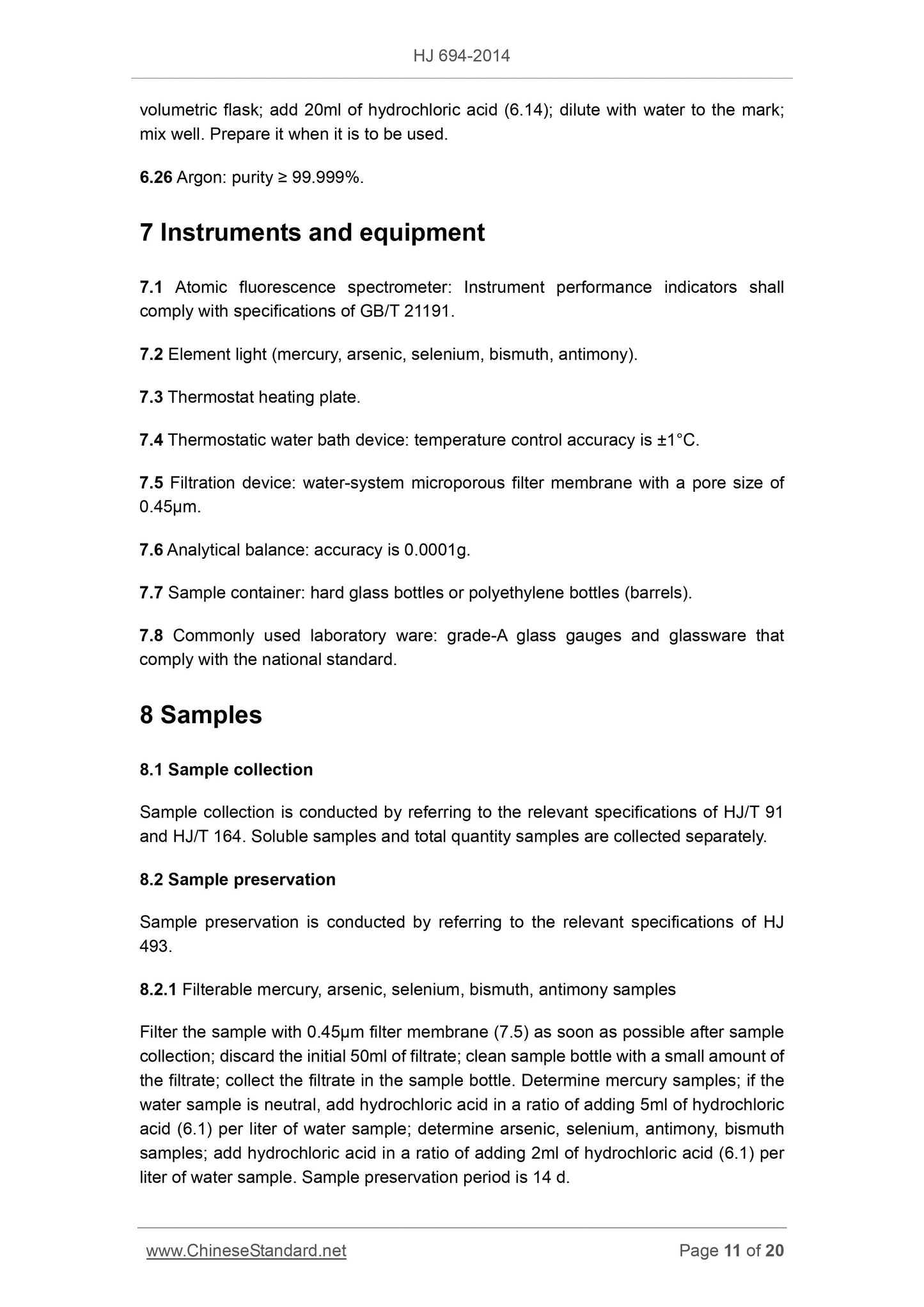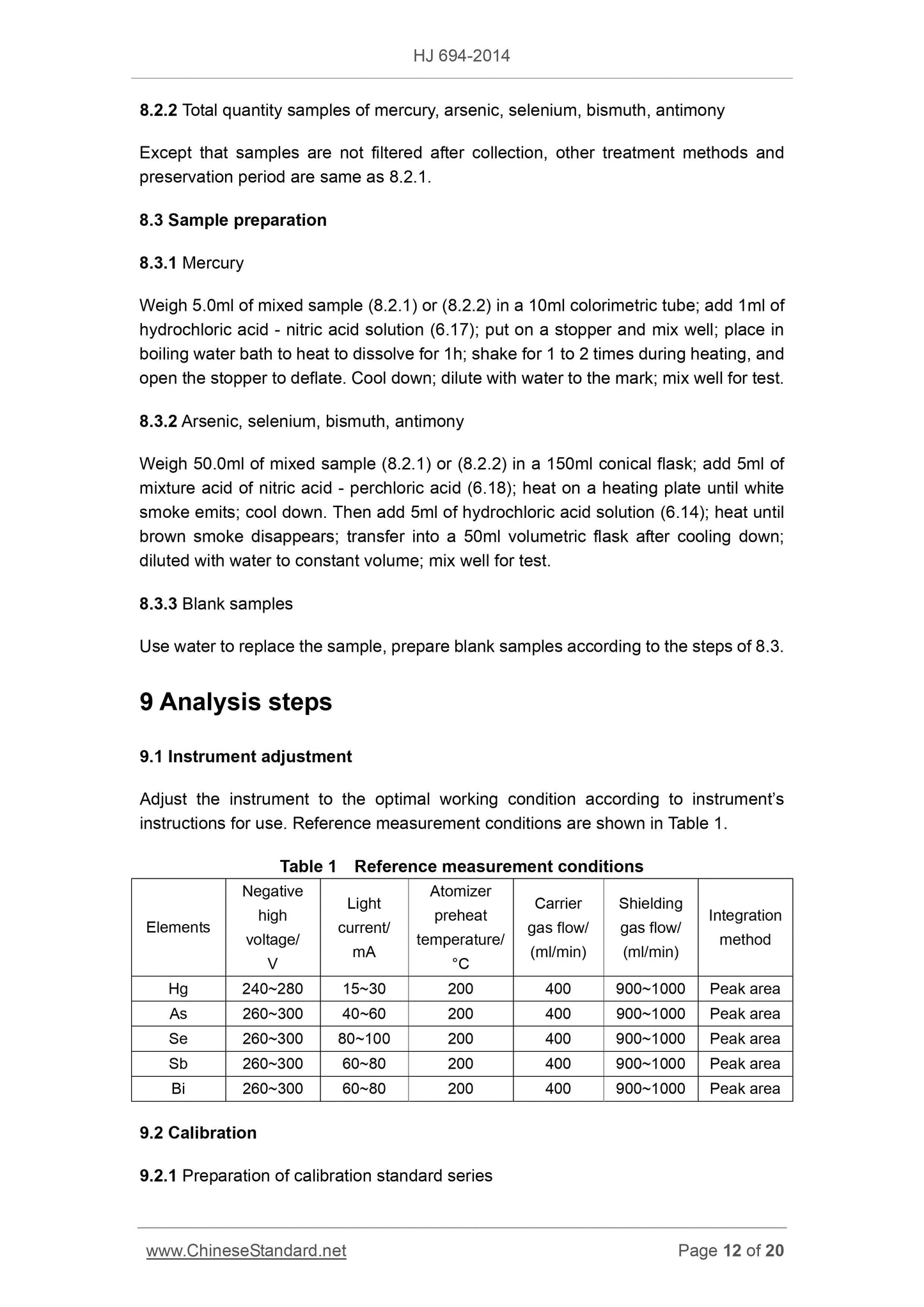1
/
of
12
www.ChineseStandard.us -- Field Test Asia Pte. Ltd.
HJ 694-2014 English PDF
HJ 694-2014 English PDF
Regular price
$155.00
Regular price
Sale price
$155.00
Unit price
/
per
Shipping calculated at checkout.
Couldn't load pickup availability
HJ 694-2014: Water Quality - Determination of Mercury, Arsenic, Selenium, Bismuth and Antimony - Atomic Fluorescence Spectrometry
Delivery: 9 seconds. Download (and Email) true-PDF + Invoice.Get Quotation: Click HJ 694-2014 (Self-service in 1-minute)
Newer / historical versions: HJ 694-2014
Preview True-PDF
Scope
This Standard specifies the atomic fluorescence spectrometry for the determination ofmercury, arsenic, selenium, bismuth, and antimony in water.
This Standard applies to the determination of soluble [Translator: dissolved-state] and
total quantity of mercury, arsenic, selenium, bismuth, and antimony in surface water,
groundwater, sewage, and industrial waste water.
According to the method of this Standard, the detection limit of mercury is 0.04μg/L,
the determination lower limit of mercury is 0.16μg/L; the detection limit of arsenic is
0.3μg/L, the determination lower limit of arsenic is 1.2μg/L; the detection limit of
selenium is 0.4μg/L, the determination lower limit of selenium is 1.6μg/L; the detection
limit of bismuth and antimony is 0.2μg/L, the determination lower limit of bismuth is
0.8μg/L.
Basic Data
| Standard ID | HJ 694-2014 (HJ694-2014) |
| Description (Translated English) | Water Quality - Determination of Mercury, Arsenic, Selenium, Bismuth and Antimony - Atomic Fluorescence Spectrometry |
| Sector / Industry | Environmental Protection Industry Standard |
| Classification of Chinese Standard | Z16 |
| Word Count Estimation | 16,127 |
| Date of Issue | 3/13/2014 |
| Date of Implementation | 7/1/2014 |
| Quoted Standard | GB/T 21191; HJ/T 91; HJ/T 164; HJ 493; HJ 494 |
| Regulation (derived from) | Ministry of Environmental Protection Notice No. 17 of 2014 |
| Issuing agency(ies) | Ministry of Ecology and Environment |
| Summary | This Standard specifies the Determination of mercury, arsenic, selenium and antimony secret atomic fluorescence spectrometry. This Standard applies to surface water, groundwater measurement, sewage and industrial waste mercury, arsenic, selenium, antimony |
Share
